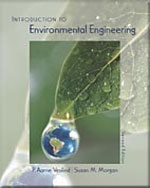Tab Article
This text has two unifying themes: materials balances and environmental ethics. First, the book demonstrates that environmental problems need to be solved using a holistic approach instead of a fragmented, single-pollution or single-medium approach. By using the concepts of materials balances, reactions, and reactors, the authors integrate and unify the presentation of water supply, waste-water treatment, air pollution control, and solid and hazardous waste management. Second, since ethics plays an increasingly important part in the professional lives of engineers, the authors incorporate ethical decision making into the discussions and problems. In many of the problems, students are required not only to solve the technical part, but also to consider the ethical ramifications of solving the technical problems.


